ADAPTATION OF DIFFERENT ANIMALS
Home » ADAPTATION OF DIFFERENT ANIMALS

ADAPTATION OF DIFFERENT ANIMALS
POLAR BEARS
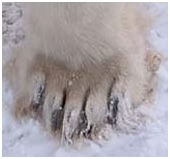 Their white fur helps them blend in with the snow and ice.
Their white fur helps them blend in with the snow and ice.- A polar bear has a layer of fat under its skin which helps it stay warm. It also has a thick layer of fur.
- The wide, large paws help a polar bear to walk in the snow.
- When a polar bear swims under water it closes it nostrils so no water can get in.
PENGUINS
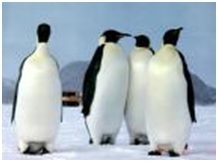 Penguins are flightless birds, but are excellent swimmers. They breed on the land or ice surfaces.
Penguins are flightless birds, but are excellent swimmers. They breed on the land or ice surfaces.- Penguins have webbed feet for powerful swimming.
- Their bodies are streamlined to reduce drag in water.
- They have thick skin and lots of fat (blubber) under their skin to keep warm in cold weather.
- They also huddle together with their friends to keep warm.
- The dark coloured feathers of a penguin’s back surface absorb heat from the sun, so helping them to warm up too.
- Penguins tightly packed feathers overlap to provide waterproofing and warmth.
- They coat their feathers with oil from a gland near the tail for water proofing.
- Their heavy, solid bones act like a diver’s weight belt, allowing them to stay underwater.
DOLPHINS
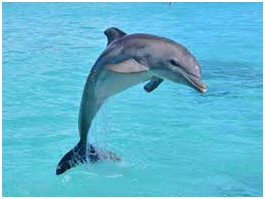 Streamlined to move fast, to catch food and to escape from predators
Streamlined to move fast, to catch food and to escape from predators- Excellent hearing to protect itself from predators
- Very intelligent mammal
- Swims with other dolphins for company and protection
FROGS
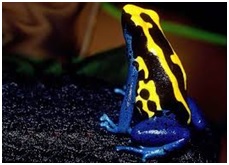 Frogs eat insects, spiders, worms, snails, fish, and even small rodents like mice.
Frogs eat insects, spiders, worms, snails, fish, and even small rodents like mice.- When a frog spots a meal, it flicks out its long, sticky tongue. The tongue sticks the meal/creature and pulls it back into the frog’s mouth.
- Frogs do have teeth, however, they are small and so not really good for chewing.
- Frogs mostly use their teeth just to hold their prey in their mouths, and then they swallow their prey whole.
- When a frog swallows large prey, it can close its eyelids and drop its eyeballs down into its mouth. Then the eyeballs help push the prey down the throat of the frog.
- A Dyeing Poison Tree Frog is brightly coloured to warn enemies of toxins. Its finger and toe tips have adhesive pads that enable the animal to climb.
GIRAFFE
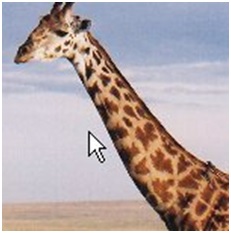 A giraffe can consume up to 12 gallons of water at one time.
A giraffe can consume up to 12 gallons of water at one time.- Their long necks allow them to feed among treetops and spot predators.
- Giraffes have an extra-large heart to pump blood up their long necks to the brain. A giraffe’s heart is 2-3 times stronger than a human heart.
- Long, tough tongues enable the giraffe to pull leaves from branches without being hurt by the thorns.
- They have prehensile tongues which allow them to hold branches by wrapping their tongues around the branches. Their tongues are up to 18 inches long.
- Spotted coat camouflages giraffes among the trees.
LIONS
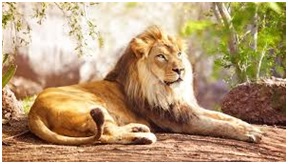 Loose belly skin allows animal to be kicked by prey with little chance of injury.
Loose belly skin allows animal to be kicked by prey with little chance of injury.- Thick mane helps male look bigger and protects the throat.
- Eyes in front allow to judge distances when stalking or ambushing prey.
- Heavily muscled forelimbs and shoulders add strength for capturing large prey.
- Forepaws equipped with long, claws which can be drawn back, help to grab and hold prey.
- Rough tongue designed to peel skin of prey animal away from flesh, and flesh from bone.
- Sandy coat colour camouflages animal and young among scrub vegetation.
LIZARDS
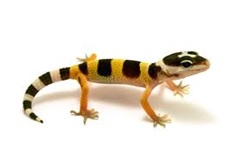 Many lizards have a tail, which breaks off readily when grabbed by a predator. This enables the lizards to escape if attacked.
Many lizards have a tail, which breaks off readily when grabbed by a predator. This enables the lizards to escape if attacked.- A lizard’s tail is used as a fat storage. By losing its tail is is losing a valuable food source.
- They are strictly nocturnal. This means that they only come out from their holes and crevices at night time to hunt for food.
- Lizards have extra-thick skin to help prevent drying out in the desert.
CAMELS
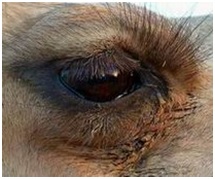 Winds blow sand all around, so a camel has long eyelashes.
Winds blow sand all around, so a camel has long eyelashes.- It has nostrils that can open and close.
- Thick eyebrows shield the eyes from the desert sun.
- A camel can go a week or more without water, and they can last for several months without food.
- They can drink up to 32 gallons (46 litres) of water at one drinking session.Camels store fat in the hump, not water.
- Camel conserve water by not sweating as the temperature rises.
- Camels feet are wide so they can walk on sand more easily.
- Camels have thick lips so they can eat the prickly desert plants without feeling pain.
- The colour of their bodies helps them to blend into their environment.
- Camel’s ears are covered with hair, even on the inside. The hair helps keep out sand or dust that might blow into the animal’s ears.
JELLYFISH
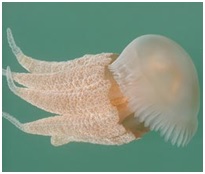 Live in the oceans, in salt water, where they eat small sea animals like plankton and little fish, and float in the sea.
Live in the oceans, in salt water, where they eat small sea animals like plankton and little fish, and float in the sea.- Only a few jellyfish live in fresh water.
- They have soft bodies and long, stinging, venomous tentacles.
- A jellyfish is 97% water.
- The largest type of jellyfish is the Lion’s mane jellyfish, which has tentacles that can be as long as 60 meters, but most jellyfish are much smaller.
- Jellyfish don’t have brains and no vertebrates.
- They are not fish.



